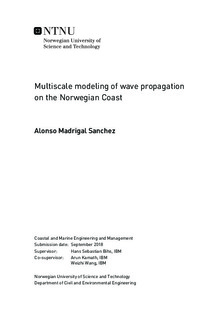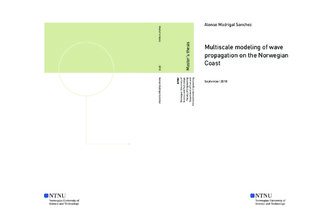| dc.description.abstract | Fjords coastlines are attributed to glaciers as the main agent of erosion. Thus, fjords are characterised by an irregular coastline configuration and rapid changes in their deep and steep slopes. These features generate a unique behaviour on the ocean wave propagation and on the water hydrodynamics. Norwegian coastline has environmental conditions to support diverse aquaculture developments along the coast. Therefore, aquaculture in Norway is considered a growing field with an enormous potential, especially in offshore locations. The development of numerical tools, such as wave models, will produce a huge improvement on the different technologies used nowadays. To achieve this huge engineering challenge a simulation of the ocean waves reaching the Norwegian fjords will be analysed using coupled numerical models. This study proposed a combined use of three different numerical models, cascade of wave models, to utilise the strengths of the models while reducing their disadvantages. For example, spectral wave model such as STWAVE is fast in open ocean but not able to capture the diffraction phenomenon, shallow water model such as REEF3D::SFLOW is able to capture most wave transformation phenomenon but limited by water depth; Computational Fluid Dynamic (CFD) model such as REEF3D::CFD captures three-dimensional details
of water wave but is computationally costly. Therefore, different models should be evaluated for specific domain and topography. The results obtained from the large domain and course grid model will serve as the input to the next region with middle resolution and a refined grid size. This is carried on until the results for the area of interest are obtained. The combined methodology suggested is expected to simulate the wave propagation and transformation between the fjords and its potential effects over different fish farms. It can be also an important input for their fish cage design. | |

